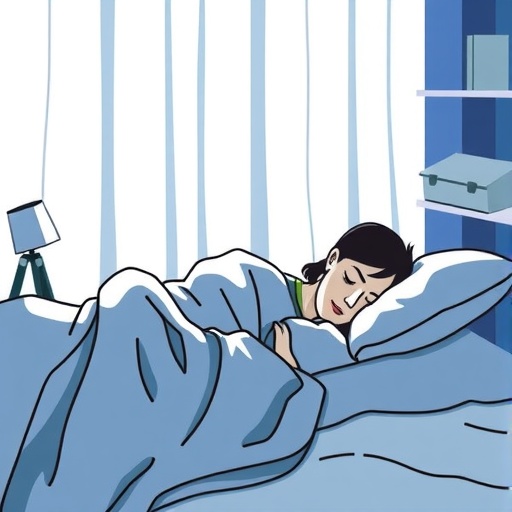Idiopathic hypersomnia (IH) is an enigmatic and profoundly debilitating neurological disorder characterized primarily by excessive daytime sleepiness that is resistant to typical restorative sleep. Despite receiving ample hours of nightly rest, patients with IH report a persistent sensation of unrefreshing sleep, rendering them unable to feel truly awake or rested at any time during the day. This chronic state of sleepiness significantly disrupts not only their daily functioning but also their overall quality of life. In a groundbreaking qualitative study published in PLOS One, researchers have delved into patient narratives shared across various online platforms to uncover the lived experience and immense impact of this rare disease from the viewpoint of those most affected.
The study represents an innovative approach to understanding idiopathic hypersomnia by harnessing the rich personal insights shared by patients within online forums, social media groups, and other digital spaces. These platforms have emerged as vital venues where individuals grappling with IH exchange stories, coping mechanisms, and frustrations related to their condition. Analyzing this real-world data, the researchers sought to transcend conventional clinical assessments and gather authentic patient-reported outcomes reflecting the multifaceted burden of idiopathic hypersomnia. This methodology also addresses the underrecognized and often invisible nature of IH, which has historically been overshadowed by more widely known sleep disorders such as narcolepsy.
Idiopathic hypersomnia’s hallmark feature—excessive sleepiness despite normal or extended sleep duration—is central to understanding the disorder’s pathophysiology. While the precise biological mechanisms remain elusive, there is increasing consensus that IH involves disruption in sleep-wake regulatory systems within the brain, particularly the hypothalamus and other related neural circuits. Unlike narcolepsy, patients with IH do not usually experience cataplexy or rapid eye movement (REM) sleep abnormalities, further complicating accurate diagnosis and treatment. Many patients describe a feeling akin to “brain fog” or a constant need to nap, although naps rarely provide meaningful relief, differentiating IH from other hypersomnolence disorders.
The analysis of patient posts revealed profound psychological and social ramifications of living with idiopathic hypersomnia. Those affected often endure stigma and misunderstanding regarding their condition, both in personal relationships and professional environments. The persistent daytime sleepiness frequently leads to impaired cognitive function, memory difficulties, and reduced concentration, which patients describe as impairing their ability to maintain consistent employment or academic performance. Furthermore, many individuals report feelings of isolation due to the rarity and invisibility of the disorder, which can exacerbate psychological distress such as anxiety and depression.
From a therapeutic standpoint, current treatment options for idiopathic hypersomnia remain limited and largely symptomatic. Stimulant medications such as modafinil or amphetamines represent the frontline interventions but show variable efficacy and often come with significant side effects. Some patients resort to lifestyle modifications including strict sleep hygiene and scheduled naps, yet these strategies are often only modestly effective at mitigating symptoms. The study underscores the urgent need for developing novel pharmacological agents targeting the underlying neurobiological abnormalities of IH, which could offer more durable and comprehensive symptom control.
The qualitative insights gained from this study have far-reaching implications for clinical practice, patient advocacy, and research innovation. By amplifying patient voices from online communities, researchers capture the heterogeneity of symptom severity, comorbidities, and adaptive behaviors that often elude traditional clinical trials and registries. This patient-centric approach can inform more nuanced diagnostic criteria and individualized treatment protocols. Moreover, greater awareness among healthcare providers can foster earlier diagnosis and reduce the protracted journeys to care that many IH patients experience.
Notably, the multidisciplinary team conducting this research spans across the United States, Germany, and Canada, reflecting a collaborative international effort to address this rare disorder. Supported by Takeda Pharmaceuticals USA, the study’s findings contribute to the expanding body of literature that acknowledges the complexity of sleep disorders and the imperative to incorporate patient-reported data in shaping future therapeutic landscapes. Conflict of interest statements indicate transparency regarding any affiliations and consultancy roles related to pharmaceutical entities, ensuring the integrity of the research.
In conclusion, idiopathic hypersomnia emerges as a severely disabling condition that severely restricts patients’ ability to function despite extensive sleep durations. The qualitative study’s novel use of patient narratives from online environments provides an unprecedented window into the lived realities and multifactorial impact of IH. Continuous endeavors to elucidate its pathophysiology, coupled with patient-driven research methodologies, herald new hope for breakthroughs in diagnosis and management. This study exemplifies the transformative potential of integrating digital patient communities into medical research, illuminating not only the challenges but also the resilience of those living with idiopathic hypersomnia.
Subject of Research: Idiopathic hypersomnia and its impact on patients’ lived experiences through qualitative analysis of online patient perspectives.
Article Title: The experience and impact of living with idiopathic hypersomnia: A qualitative study of patient perspectives shared in online media
News Publication Date: 22-Oct-2025
Web References: http://dx.doi.org/10.1371/journal.pone.0333497
Image Credits: Bermingham et al., 2025, PLOS One, CC-BY 4.0
Keywords: idiopathic hypersomnia, excessive daytime sleepiness, sleep disorders, qualitative study, patient perspectives, neuropathophysiology, digital health, sleep regulation, rare diseases, patient-reported outcomes




